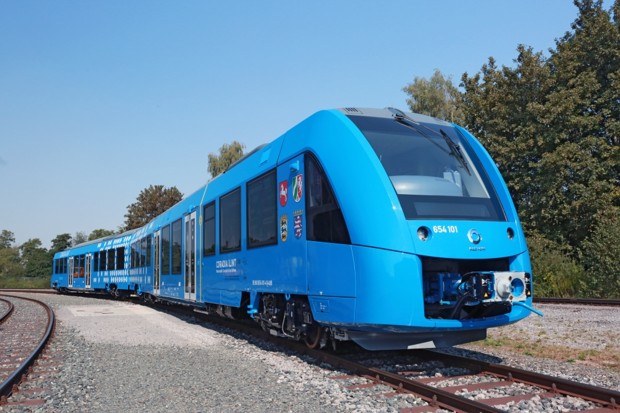The new trains which will replace diesel trains in Lower Saxony will operate on routes between Cuxhaven, Bremerhaven, Bremervoerde, and Buxtehude from December 2021.
Germany has set plans in place to launch its first Hydrogen-Powered passenger trains. The trains will revolutionize the country’s public transport system. The zero-emission trains, run silently on hydrogen fuel cells and emit only steam and condensed water.
According to a national report, the Lower Saxony state has already signed an agreement with Alstom for the incorporation 14 such trains in 2021. Named Coradia iLint, the low-floor passenger train will be able to travel for up to a whopping 1 000km. It will also be able to reach a staggering top speed of 140km/h. The train will be powered by a hydrogen fuel cell, which produces electric power.
The agreement for the production of the new trains was signed by the Lower Saxony’s local transport authority LNVG and Alstom. German chemical group, Linde was also present to sign the agreement. The group has been designated the task of prepping hydrogen filling stations for the trains.
Alstom’s Senior Vice President for Europe said at the agreement signing, that the day represents a “real breakthrough” for the rail transport industry. He also said that it was a huge step towards changing the world and moving towards a clean mobility system. The VP, Gian Luca Erbacci added that it was a worldwide first for a hydrogen-fuelled passenger regional train to replace a diesel train. The trains will generate zero-emissions all while producing the same performance as a regular regional diesel train with up to 1 000km autonomy.
The new trains which will replace diesel trains in Lower Saxony will operate on routes between Cuxhaven, Bremerhaven, Bremervoerde, and Buxtehude from December 2021. But for those in Lower Saxony, 2021 will not be the first time they see the hydrogen trains running on local tracks.
Coradia iLint was operational for the first time during a four-week test run earlier this year. Following on from the successful tests in March, the train is expected to do its first passenger test runs in early 2018. During the trials in March, the train generated traction through the use of hydrogen produced in an industrial process.
However, it has been reported that Alstom now plans to use hydrogen gathered from several wind turbines in the state. The economy and transport minister of Lower Saxony said that from now on there will be a “real alternative” to diesel trains in non-electrified rail transport. He also highlighted the importance of using clean fuel alternatives. He added that Hydrogen fuel cells were an ideal combination for climate protection as well as for the energy and transport revolution because they allow for the storage of energy and emission-free traveling on the state’s railways.

















